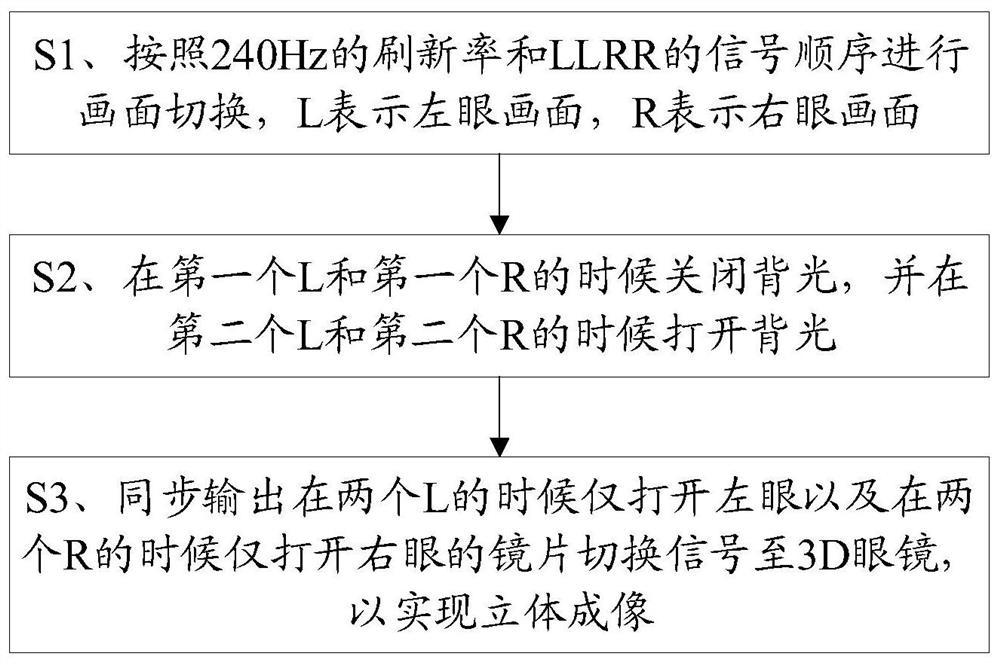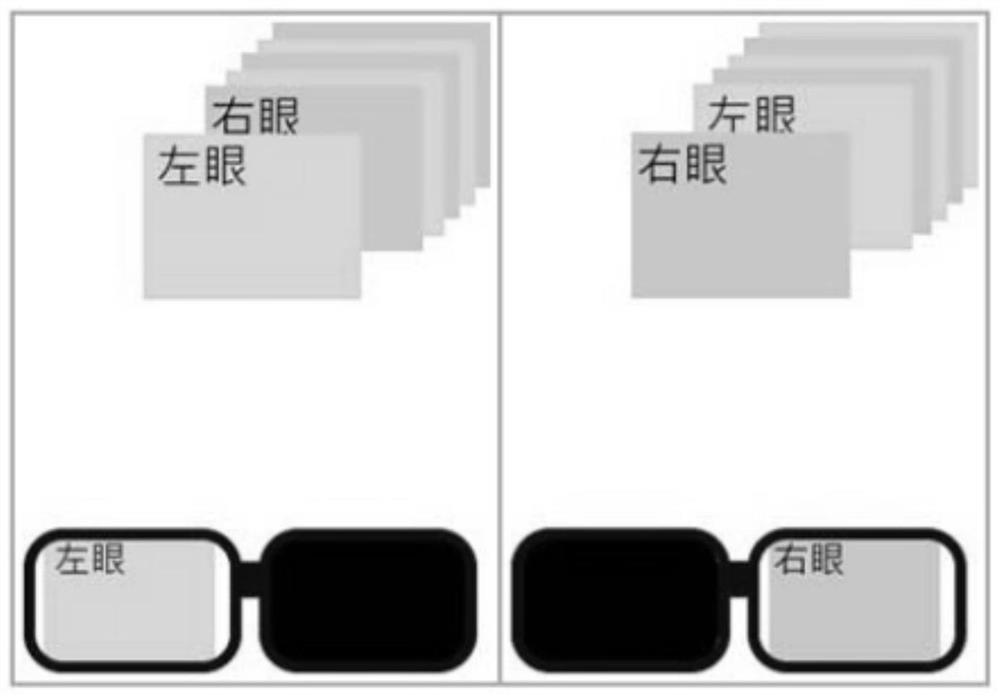Stereo imaging method and 3D control terminal
A technology for stereo imaging and terminal control. It is applied in stereo systems, image communication, electrical components, etc., and can solve problems such as high price thresholds and inability to adapt to 3D glasses.
- Summary
- Abstract
- Description
- Claims
- Application Information
AI Technical Summary
Problems solved by technology
Method used
Image
Examples
Embodiment 1
[0061] Please refer to figure 1 with Figure 4 , Embodiment 1 of the present invention is:
[0062] Stereoscopic imaging methods include active glasses and passive glasses in the current technology. Since the present invention involves active glasses, the stereoscopic imaging technology of active glasses will be briefly described below. See the background art for its principle. Because this technology alternately displays the images of the left eye and the right eye on the screen, in order to reduce the flickering feeling, this kind of display requires a higher refresh rate, such as the existing 120HZ display, so that the left and right eyes can get 60Hz respectively , due to the residual effect of the LCD, the actual image on the monitor is updated to image 3 As shown, so different backlight control methods are adopted at a refresh rate of 120Hz, specifically, local control of the backlight and an increase of 30%-40% of Vtotal (vertical synchronization period). At the sam...
Embodiment 2
[0077] Please refer to Figure 5 , the second embodiment of the present invention is:
[0078] The 3D control terminal 1 includes a memory 3, a processor 2, and a computer program stored in the memory 3 and operable on the processor 2. When the processor 2 executes the computer program, the steps of the first embodiment above are realized.
[0079] In this embodiment, the 3D control terminal 1 refers to a display with a built-in 3D control board, and the display includes a backlight part. In other equivalent embodiments, the 3D control terminal 1 may be a 3D control panel. In this case, turning off the backlight and turning on the backlight in the above steps correspond to sending a control signal for turning off the backlight and a control signal for turning on the backlight.
[0080] To sum up, the stereoscopic imaging method and 3D control terminal provided by the present invention, in the case of using a high refresh rate of 240Hz, switch screens in the order of LLRR sign...
PUM
 Login to View More
Login to View More Abstract
Description
Claims
Application Information
 Login to View More
Login to View More - R&D
- Intellectual Property
- Life Sciences
- Materials
- Tech Scout
- Unparalleled Data Quality
- Higher Quality Content
- 60% Fewer Hallucinations
Browse by: Latest US Patents, China's latest patents, Technical Efficacy Thesaurus, Application Domain, Technology Topic, Popular Technical Reports.
© 2025 PatSnap. All rights reserved.Legal|Privacy policy|Modern Slavery Act Transparency Statement|Sitemap|About US| Contact US: help@patsnap.com



